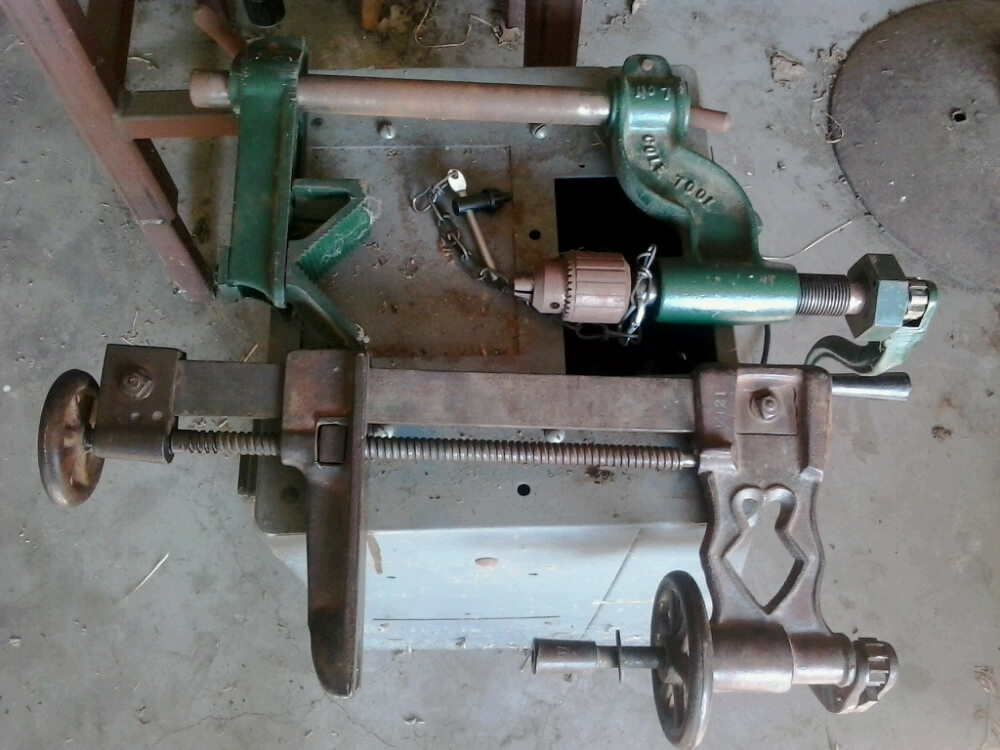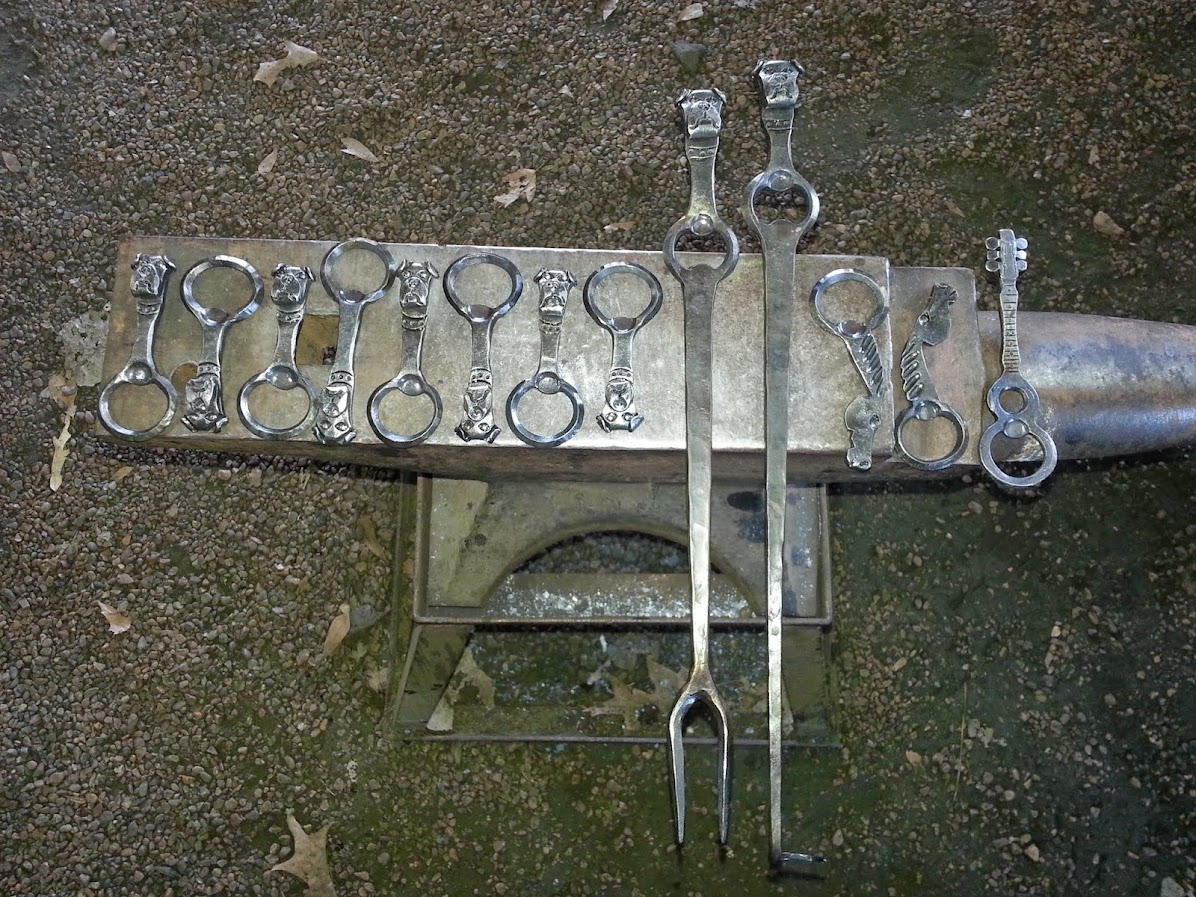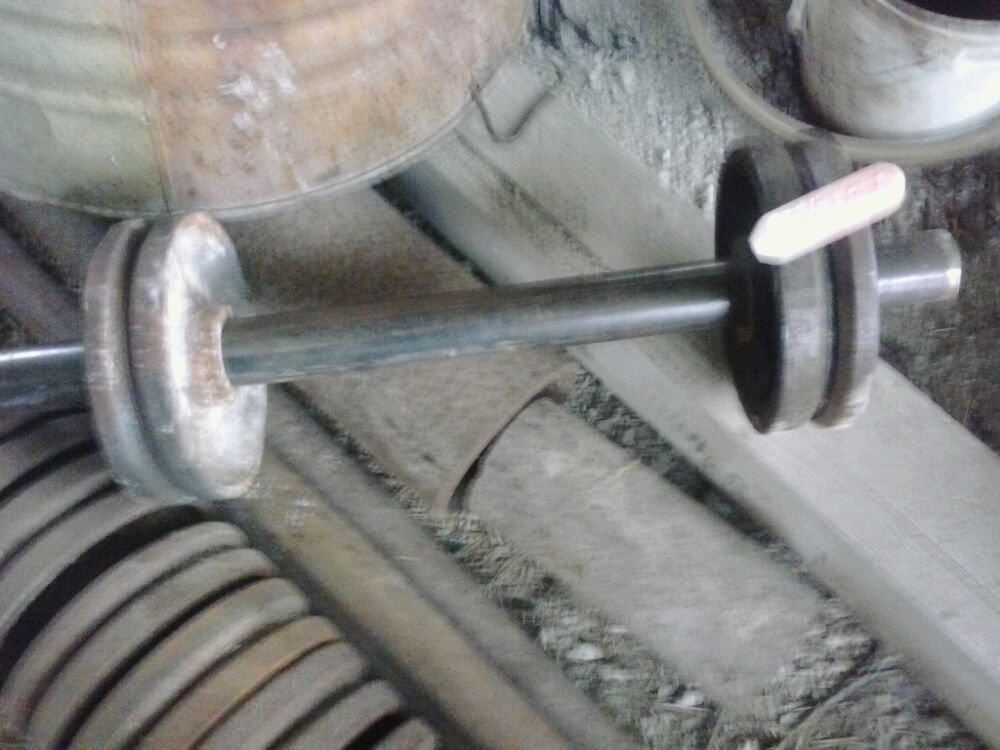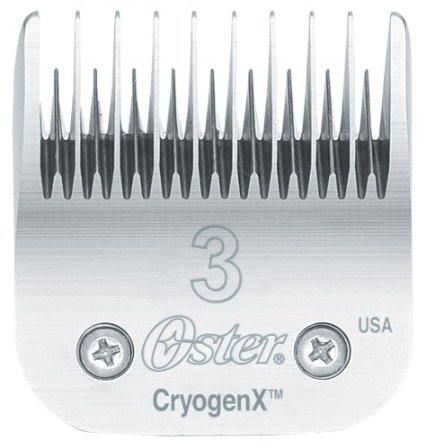-
Posts
255 -
Joined
-
Last visited
Content Type
Profiles
Forums
Articles
Gallery
Downloads
Events
Posts posted by aessinus
-
-
Howdy & thank you for your service.
You next few weeks can easily be spent read this forum, but worth every career-building minute.
-
On 8/19/2016 at 6:33 PM, Frosty said:
That hurts to see. Some people shouldn't be allowed to handle a tool more demanding than a broom and dust pan.

Frosty The Lucky.
Conditions like this are why I refuse to let production folks use our tool fab shop unsupervised, even though the majority are company property.
May I make a sign with your quote?
-
If the Hi-Lift has the bolt-on adapter, they make a really stout, if somewhat short, bar clamp.
-
On 4/20/2016 at 9:16 PM, ThomasPowers said:
Powdered metal does a pretty good burn just by itself. Shoot powdered most anything oxidizable does a good job---
In 30+ years in my industry (honeycomb) I've seen a couple of bad ones from the aluminum dust our bandsaws produce.
Ist was a 55gal drum of powder that had been sealed with poly sheet & tape & stored out back the shop. The sheet allowed the barrel to get water in and made a galvanic circuit. When the H2/O2 recombined it blew a hole about 6' deep in the caliche yard & a whole bunch of the back windows. The plant manager wasn't happy.
2nd one was accumulated dust, rags, old airlines under a 5' x 12' 1/2"aluminum topped layout table. Gas axe sparks set off the crap under the table & the top started melting & finally caught. Before the guys in the shiny red trucks got it extinguished, the fire had gone through the roof 22' up. Different plant manager, but also not happy.
Thankfully, that maintenace guy went on to another career path.
-
-
-
7 hours ago, Frosty said:
I had to look Hackberry up I'd never heard of it. The Wiki article I read says it's easy to distinguish from Elm and has a completely different scientific name, Celtis, etc.etc. Bearing in mind that's Wiki and automatically suspect but it was first hit and handy.
Bad on my google fu & memory, Frosty; I should have checked. They are easy to distinguish tho. Leaves are half spear, half heart, bark on a tree much bigger than my leg gets to be almost like short stubby thorns. Was mislocated to Pennsylvania (not AK, but too cold for native Texans) for 7 years & they even grow up there. Maybe you have them near the coast. Look for ugly, brushy fencelines.
-
"Slab" handles similar to Frosty (love that description, Sir), but hackberry instead. Those things grow any/everywhere across north Tx & I cut ém for handles at work & home from the fencelines & right-of-ways around all three properties. Carry a folding Bahco saw in my vehicle for that express purpose. Rather like stopping for roadkill rust.
Apparently they are in the elm family, but they are tough enough to take the 5 year drought we just finished without issue. Make tough,springy handles. My goto 3# even has a slight curve so I can feel where the rounding face is without looking
-
On 3/8/2016 at 11:49 AM, Beginner Blacksmith said:
90% of this stuff came from my Farher who also was a industrial hammer operator, I started working in the forge when I was 17 for $4 an hour in 1976, the coal forge belonged to my Great Grandfather, I think I'm the last one in the family with interest in the craft. There are only a couple of blacksmiths around here that I know of. Maybe there are some on here close by?
Your 3rd photo looks suspiciously like Martin Forge on southside...
Quite a few folks in the immediate DFW area. Like you I've only done round/square, square/round & making small machine piece for repairs at work.
My son does show some interest making corkscrews & openers for his favorite craft brew store, & small machine piece for repairs at work.
We,re the "dirty hand" engineers at both places.

-
Howdy! '83 myself & son is '13, both MET
Ain't material science & metallurgy fun?
Welcome aboard
-
I've used dropped acorns/leaves from the oak trees at work. Was shooting for a tanning solution for a hide & it stained the SS vessel pretty good. Patinates most carbon steels in a few hours, and your hands, dishtowels, floor, etc.
-
On 1/16/2016 at 11:28 AM, BIGGUNDOCTOR said:
The top one in the patent drawing appears to have a built in bottle stopper-the round part in the cutaway looks to have an added layer, possibly rubber. Open it, then use the opener to reseal it.
 Why reseal an empty bottle....?
Why reseal an empty bottle....? 
-
On 7/9/2014 at 6:16 PM, LDW said:
So many great techniques & ideas here. The bbq fork opener should be worth a try to drop off at the craft beer store in town. Openers & corkscrews sell well there.
Consider it borrowed. The bulldogs caught my eye because, well, they're buldogs.... <3
-
3 hours ago, ausfire said:
Thanks, but it's not rocket science. As a teacher of English, I have used that poem many times; it has an interesting rhyme scheme and the imagery is wonderful.
I have to wonder, are you polyglot, as well? Son is, but he thinks I only speak to materials.....
-
Ever figure out the brace drive one? Or the piece immediately to it's right? Or your "tuning forks"?
I got the balance right, but what a cool exercise....
-
Quite the haul. The monkey wrenches alone were a score for $30, especially the five "perfect" wood handled ones. You'll be pleased using the box-end wrenches. Are they all VLCHEK and/or Martin?
Did you crop the vise intentionally or just being a tease?
-
Thanks, Hoss. I've had great luck so far.
-
-
On 4/1/2013 at 8:19 AM, bigfootnampa said:
Cherry is too soft for hammer handles IMO. Maple is too brittle IMO. Either makes fine handles for lighter duty tools like awls, files, screwdrivers, even carving knives. Pecan, hickory, osage orange, hackberry, elm and ash are all good hammer handle woods IMO. Forging hammers especially, are put to VERY HEAVY use and need both great strength and flexibility. They and axes are about as tough a challenge for handling as there is! My advice is to go with the super tough woods for handles on those type tools.
I waqs curious & did some searching. Your posts are the only ones I've found to include hackberry regularly.
I've a good supply, both at home & work. The 3-4"growth along fencelines & the railway out back seem to make great hammer handles. Even at work they have held up for several years of abuse without breaking. Wedged & oiled seems to do the trick for keeping them tight for the safety inspector too.
-
looks like a lower platen from a small press.... See any signs of heating elements in the underside?
Should make a grand tall layout bench or sharpening station after some vinegar, steel wool and oil/wax. Appears to have bosses in the support structure, maybe holes for press posts to take legs easily.
-
On 8/17/2016 at 6:45 AM, No.4shot said:
Thanks for all the sound advice. I already oiled and wire brushed them. That was the first thing I did when I got them home. My main interest is blade smithing. Although I would like to learn general smithing first to learn more. But I have been making knives going on three years now using stock removal. For the last 6 months I have been working with a gentleman learning how to forge knives. I recently found another local guy to teach me general blacksmith techniques.
Anyways I really like the idea of keeping both. Like had been said both are in way better condition than I have been seeing locally. Plus I got a great deal from this guy because it was a buy it all or none type deal. On the other hand it would be nice to recoup some of my money.
So following your adviceth is I got some other tools in the deal that I am gonna start selling first. Try them both out then make a decision. Thanks again
Mike
Since they are both oiled up, stump mount them both on nice oiled wood. Reinforce the alternating monthly usage; keep the extra in the living room to remind you each morning to get to the forge & hit hot steel.
-
On 3/28/2015 at 4:30 PM, AddictedToSwedes said:
Don't get discouraged. It took me roughly 6 months of searching before I found a keeper. I was fairly discerning and passed on probably 15-20 anvils that had signs of moderate wear and tear. What's funny is that I brought my anvil home and had a party a few weeks later for my sons birthday... Whilst showing friends the anvil and forge I had acquired, several of them remarked they had old anvils rusting away in their barns that I was welcome to. So... Moral of the story is sometimes you overlook the most obvious places to find anvils.
Yup, TPAAAT at it's utmost.
-
So many spike ideas. One thought I've had is to use one of the lock washers that are used at the track joints. Spark test indicates more carbon than a spike.
Anybody ever use one to put a bit in for the blade edge? That way the knife would truly be all RR.
Just musing possibilities while it rains.
-
I've cut my own hair for 30+ years & used to cut the boy's 'til he went to a pony-tail. Roached a lot of mule manes , too. My Oster clippers have a snap-in blade system. The two screws are removed to polish the mating surfaces.
On 2/26/2016 at 0:45 PM, Charlotte said:That would make sense for lapidary work. What about sharpening the blades of powered shears They need to critically flat to work properly.
All you do is remove the screws and polish the surface flat on a fine stone. Bought 1 set of replacements about ten years ago.
I remember my grandpa shearing his sheep when I was a lad. He just used a bigger, coarser version, about 3-4" wide.






Cercast ht
in Gas Forges
Posted
So while I was trying to get my new lil' anvil up to temp for quench, I got to thinking about what we use at work for epoxy laminate thickener. Glass microballoons, so tiny they feel like rubbing talcum powder between your fingers. btw, 3M's site nav blows - maybe that's why we use a local vendor of a different manufacturer.... Just where I looked 1st.
Per 3M data sheet: "Thermal Stability Appreciable changes in bubble properties may occur above 1112°F (600°C) depending on temperature and duration of exposure"
Just so you don't think it leaked out of my boots, here's the link to the data sheet that I finally located http://multimedia.3m.com/mws/media/91049O/3m-glass-bubbles-k-s-and-im-series.pdf .
Anyhoo, reckon the little spheres would stabilize a refractory some & slow the HT without messing with surface durability much?